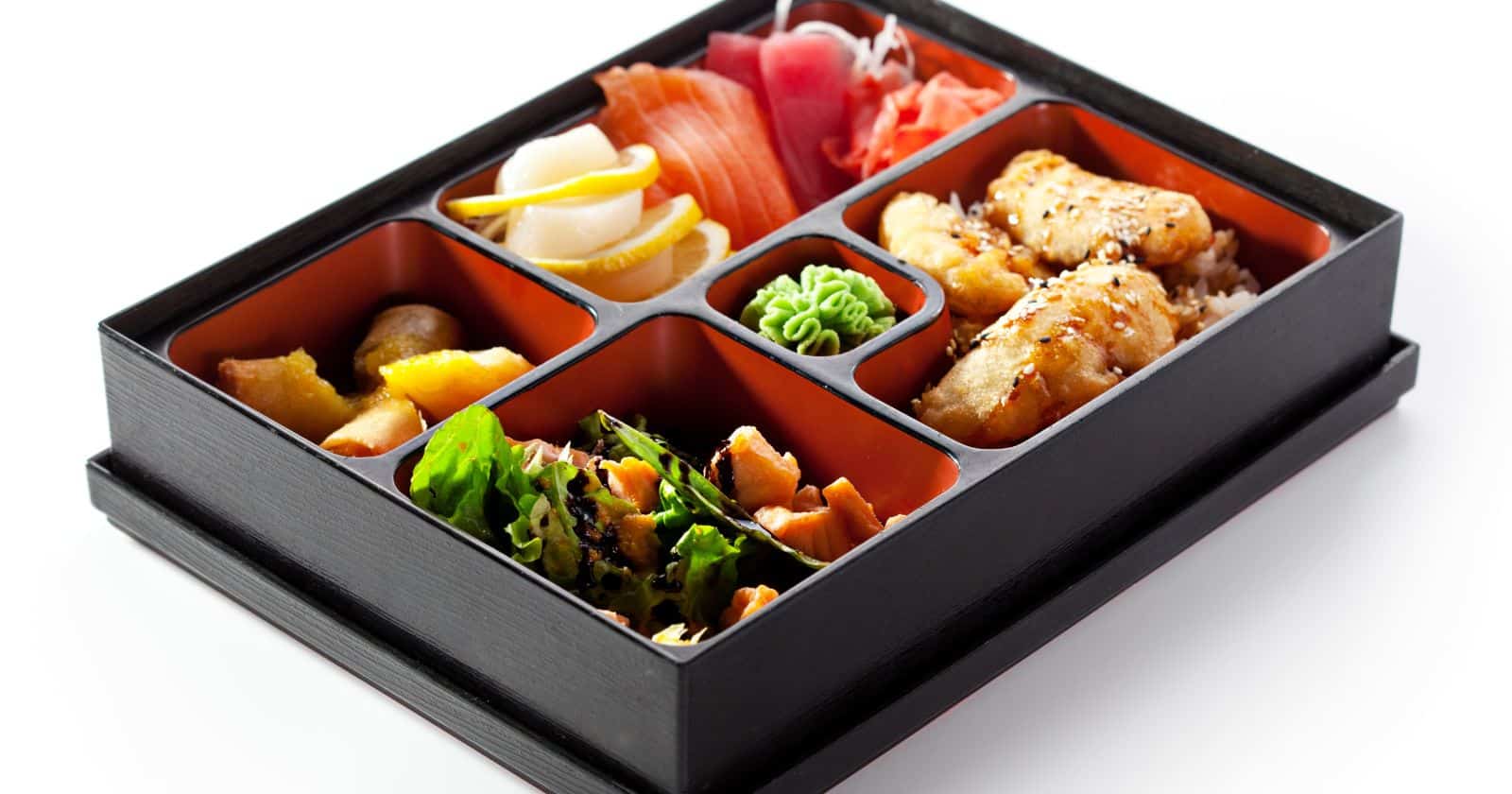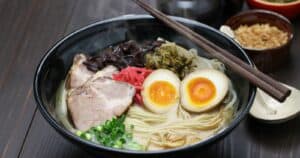Hungry for a taste of Japan? Curious about what the Japanese munch on for their midday meal? Get ready to delve into a world of diverse and delectable lunch options that will surely whet your appetite.
From traditional teishoku sets to modern bento boxes and everything in between, Japanese cuisine offers a delightful range of choices that cater to any taste or preference. Join us as we explore the enchanting world of Japanese lunchtime delights!
From teishoku sets featuring rice, miso soup, and a variety of sides, to the bowlfuls of flavorsome ramen that warm the soul, and the convenience of bento boxes that can be enjoyed on the go, Japan has a lunch option for everyone. Indulge in the savory goodness of curry, savor delightful sandwiches filled with unique ingredients, and experience the harmony of flavors that Japanese cuisine is famous for.
With such a diverse array of lunch options, Japanese cuisine never fails to captivate and surprise. Join us on this culinary journey and discover the flavors that make Japan’s lunchtime experience truly exceptional.
Traditional Japanese Lunch Staples
Japanese cuisine, known as washoku, is deeply rooted in the concept of seasonality, embracing the unique flavors and ingredients that each season brings. Whether you’re an aspiring home cook or simply curious about Japanese lunch staples, here are some dishes that you can easily recreate in your own kitchen.
- Rice: Rice is a fundamental component of Japanese cuisine, serving as the backbone of virtually every meal. It is typically steamed and enjoyed alongside various dishes or used as a base for other creations.
- Noodles: Soba (buckwheat) and udon (thick wheat) noodles are popular lunch choices in Japan. They can be served hot in comforting soups or chilled with a dipping sauce, making them versatile and satisfying.
- Onigiri: Onigiri, or rice balls, are portable and convenient lunch options. These triangular or cylindrical-shaped rice balls are often filled with flavorful ingredients like salmon, pickled plum, or tuna, making them delicious and easy to grab on the go.
- Miso Soup: A staple in Japanese households, miso soup is a simple yet flavorful broth made with miso paste and dashi. It is commonly paired with tofu, seaweed, and green onions, offering a warm and comforting addition to any lunch.
- Nikujaga: Nikujaga is a hearty Japanese stew made with meat (typically beef), potatoes, onions, and carrots. This comforting dish is often served with rice and offers a satisfying balance of flavors and textures.
- Curry Rice: Japanese-style curry is a popular lunch choice, featuring a rich and savory curry sauce served over a bed of steamed rice. It is usually made with vegetables and either chicken or beef, creating a hearty and flavorful meal.
- Omurice: Combining Western-style omelets with Japanese fried rice, omurice is a beloved dish. The omelet is filled with seasoned fried rice and often topped with ketchup, creating a delicious fusion of flavors.
- Takikomi Gohan: Takikomi gohan is a flavorful mixed rice dish. It is cooked with various ingredients such as mushrooms, vegetables, and chicken, seasoned with soy sauce and sake. This aromatic and comforting dish is a favorite for lunch.
- Tonkatsu: Tonkatsu is a breaded and deep-fried pork cutlet, served with rice and shredded cabbage. This crispy and succulent dish is complemented by a tangy tonkatsu sauce, making it a popular lunchtime treat.
- Gyoza: Gyoza are dumplings filled with a mixture of ground meat and vegetables. These savory delights are typically pan-fried and served as an appetizer or side dish, offering a flavorful and satisfying addition to any lunch.
- Tempura: Tempura is a light and crispy Japanese deep-fried dish. Seafood or vegetables are coated in a delicate batter and quickly fried to retain their natural flavors and textures. It is commonly enjoyed with a dipping sauce and served alongside rice.
- Teriyaki Chicken: Teriyaki chicken is a beloved Japanese dish featuring grilled or pan-fried chicken marinated in a sweet and savory teriyaki sauce. It is often served with rice and steamed vegetables, providing a delicious and well-rounded lunch option.
- Soba Salad: Soba salad is a refreshing cold noodle dish made with buckwheat noodles, crisp vegetables, and a dressing infused with soy sauce, vinegar, and sesame oil. This light and nutritious salad is perfect for a healthy lunch.
- Okonomiyaki: Okonomiyaki is a savory pancake made with various ingredients such as cabbage, pork, and seafood. Topped with a sweet and savory sauce, mayonnaise, and bonito flakes, this flavorful dish is a popular lunch choice in Japan.
- Katsu Curry: Katsu curry combines the crunchy and breaded goodness of tonkatsu with the rich flavors of Japanese curry. It features breaded and deep-fried pork or chicken cutlets served over a bed of fragrant rice topped with curry sauce.
These are just a few examples of traditional Japanese lunch staples that showcase the rich variety and tantalizing flavors of Japanese cuisine. With their emphasis on seasonality and harmony, these dishes can be easily made at home, bringing a taste of Japan to your lunchtime experience.
Balanced and Nutritious Meal Options
Japanese cuisine is known for its emphasis on balanced and nutritious meals. According to Japanese food-based dietary guidelines, a healthy and balanced meal includes staple food, a main dish providing protein, side dishes with a variety of nutrients, soup for hydration and digestion, and fermented foods for added health benefits.
A typical Japanese lunch usually consists of rice or noodle dishes like ramen, soba, and udon bowls. Bento boxes are also popular, containing rice, vegetables, and a protein like fish or meat. Set meals called teishoku are another option, featuring a main dish accompanied by rice, soup, and various sides.
Japanese people believe that a balanced meal should have something hot, cold, crunchy, soft, and chewy, providing a variety of textures and temperatures to make the meal more enjoyable and satisfying.
Popular Japanese Lunch Specialties
Japanese cuisine offers a variety of delicious and healthy lunch options to satisfy different preferences. Here are some popular Japanese lunch specialties:
- Rice or noodle dishes: Japanese cuisine is known for its variety of rice or noodle dishes. Ramen, soba, udon, and gyudon beef bowls are among the beloved choices. These dishes feature flavorful broths, tender noodles, and a range of toppings that make them a satisfying and filling lunch option.
- Bento boxes: Bento boxes are a staple in Japanese lunch culture. These compact, compartmentalized lunch boxes consist of a balanced combination of rice, vegetables, and a protein such as fish or meat. Bento boxes are convenient for those on the go and offer a diverse range of flavors in a single meal.
- Set meals: Teishoku, or set meals, are popular lunch options that include a main dish accompanied by rice, soup, and various other sides. These balanced meals showcase the essence of Japanese cuisine, with a focus on simplicity, seasonality, and impeccable presentation.
In addition to these specialties, other popular Japanese lunch options include tonkatsu, a deep-fried, breaded pork cutlet often found in bento boxes, tempura, a dish of battered and deep-fried seafood or vegetables that can be enjoyed as a main or side dish, and Japanese curry, a thick and savory curry sauce served over rice.
Japanese lunch is not only delicious but also plays a significant role in maintaining a healthy and balanced diet. In Japan, lunch is particularly important for individuals with long work hours, as it provides the necessary sustenance to carry them through the day. Additionally, Japanese school children often benefit from nutritious and well-rounded lunches provided at school on weekdays.
Quick and Convenient Lunch Choices
When it comes to quick and convenient lunch choices in Japan, there are several options to choose from. Japanese people often rely on their lunch to sustain them throughout the day, making it an important meal. Here are some popular choices:
- Convenience store food: Convenience stores like 7-Eleven and Lawson offer a wide variety of pre-packaged meals that can be quickly heated up or eaten on the go. These meals include rice balls, sandwiches, salads, and noodle dishes. It’s a convenient and affordable option for those who need a quick lunch.
- Set meals: Set meals, known as teishoku, are a popular option for lunch and can be found in many restaurants. They usually consist of a main dish accompanied by rice, soup, and various other sides. These set meals provide a balanced and filling lunch option.
- Rice or noodle dishes: Rice or noodle dishes like ramen, soba, and udon bowls are also popular for lunch and can be found in many restaurants. These dishes are flavorful, satisfying, and often come with a variety of toppings and side dishes.
- Bento boxes: Bento boxes are boxed lunches that can be taken to school or work. They are available at convenience stores and restaurants and typically include rice, vegetables, and a protein like fish or meat. Bento boxes are a convenient and portable option for lunch.
- Fast food: Fast food chains such as McDonald’s and KFC can also be found in Japan and offer quick and convenient lunch options. While these may not always be the healthiest choices, they are popular among people looking for a quick meal on the go.
In addition to these options, it’s worth mentioning that Japanese school children often receive healthy and balanced lunches at school. These lunches provide essential nutrients and help children stay energized throughout the day.
Regional Variations in Japanese Lunches
Japanese cuisine is diverse and varies by region. Here are some regional variations in Japanese lunches:
- Kanto region: The Kanto region, including Tokyo, is famous for its seafood dishes like sushi and sashimi. Ramen is also a popular lunch option in this region.
- Kansai region: The Kansai region, home to Osaka and Kyoto, offers street food delights such as takoyaki (octopus balls) and okonomiyaki (savory pancakes with cabbage, meat, or seafood).
- Hokkaido region: Hokkaido, Japan’s northernmost prefecture, is known for its fresh seafood, dairy produce, meats, and vegetables. Lunch options like ramen and soup curry are popular here.
- Tohoku region: The Tohoku region, including Aomori and Akita prefectures, presents seafood specialties like ichigo-ni and jappa-jiru. These dishes feature thinly sliced sea urchin roe, abalone, fish gut, and vegetables.
- Chugoku region: The Chugoku region, consisting of Hiroshima and Okayama prefectures, is renowned for okonomiyaki and oysters. The savory pancakes and locally harvested oysters make for a unique lunch experience.
- Kyushu region: The Kyushu region, housing Fukuoka and Nagasaki prefectures, tempts taste buds with tonkotsu ramen and mentaiko (spicy cod roe). These flavorful dishes are popular and reflect the region’s culinary traditions.
Japanese lunch options go beyond these regional specialties. Rice or noodle dishes like ramen, soba, and udon bowls are widely enjoyed throughout Japan. Bento boxes, with their assortment of small portions, are a convenient and popular lunch choice. Another option is the teishoku, a set meal that typically includes a main dish with rice, soup, and various sides.
Healthy Eating Habits and Portion Control
Healthy eating habits and portion control are essential for maintaining a healthy weight and overall well-being. By following these practices, individuals can make better food choices and prevent overeating. Using smaller plates is a simple yet effective way to control portion sizes without feeling deprived. Additionally, filling half of your plate with fruits and vegetables ensures a nutrient-dense and low-calorie meal.
Using your hands as a guide can help estimate appropriate portion sizes for protein and carbohydrates. It is also crucial to be mindful of portion sizes and stop eating when you feel full. Avoiding distractions while eating and measuring your food can further support portion control efforts. When dining out, asking for a half portion or sharing a meal can help manage portion sizes.
Finally, avoiding super-sized portions is essential to prevent overeating and control calorie intake. By implementing these healthy eating habits and portion control tips, individuals can improve their overall health and maintain a healthy weight.
Influence of Bento Boxes on Japanese Lunch Culture
Bento boxes have had a significant influence on Japanese lunch culture. These compact and convenient containers have become a cultural icon, promoting healthy eating habits, convenience, and aesthetic appeal.
Historically, bento boxes have been associated with the aristocracy and samurai classes, showcasing their cultural significance. Originally used for food transportation during travel, bento boxes were adorned with intricate designs. Even today, bento boxes remain deeply rooted in Japanese culture, symbolizing the concept of omotenashi, or hospitality.
In terms of convenience, bento boxes have revolutionized the way people bring their meals to school or work. These compact containers are easy to carry and enable individuals to eat on the go. This portability has made it convenient for busy Japanese professionals and students to enjoy a nutritious homemade lunch wherever they are.
One of the key benefits of bento boxes is their contribution to healthy eating habits. They generally contain a balanced assortment of foods, including rice, vegetables, and protein such as fish or meat. This emphasis on a varied and nutritious meal has played a crucial role in promoting healthier eating habits among the Japanese population.
Beyond their practicality and health benefits, bento boxes also boast aesthetic appeal. Often arranged in visually pleasing ways, with vibrant colors and attractive shapes, bento boxes have become a symbol of creativity and artistry. People take pride in crafting beautiful and impressive bento box arrangements, contributing to the development of a bento box culture in Japan.





